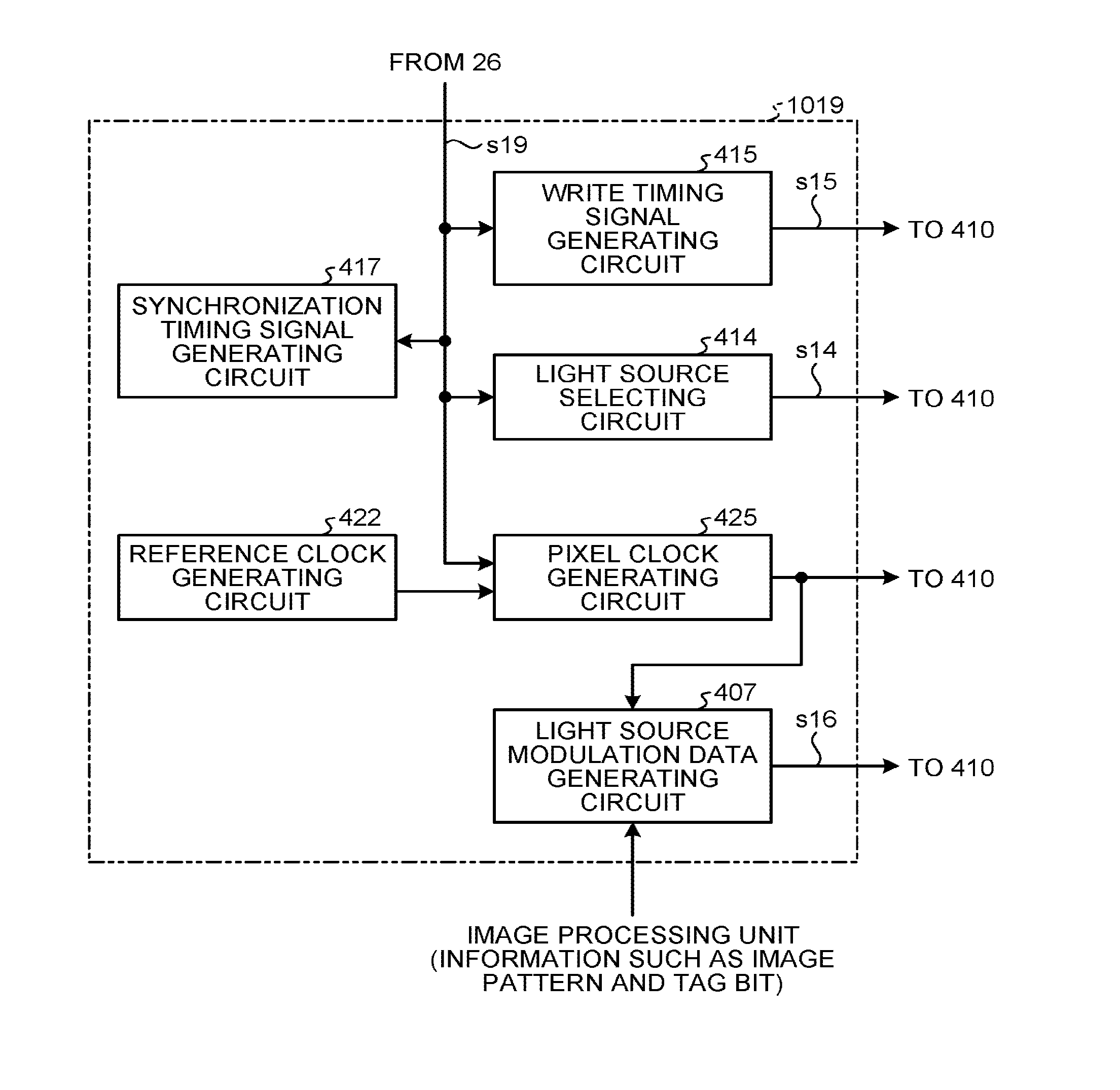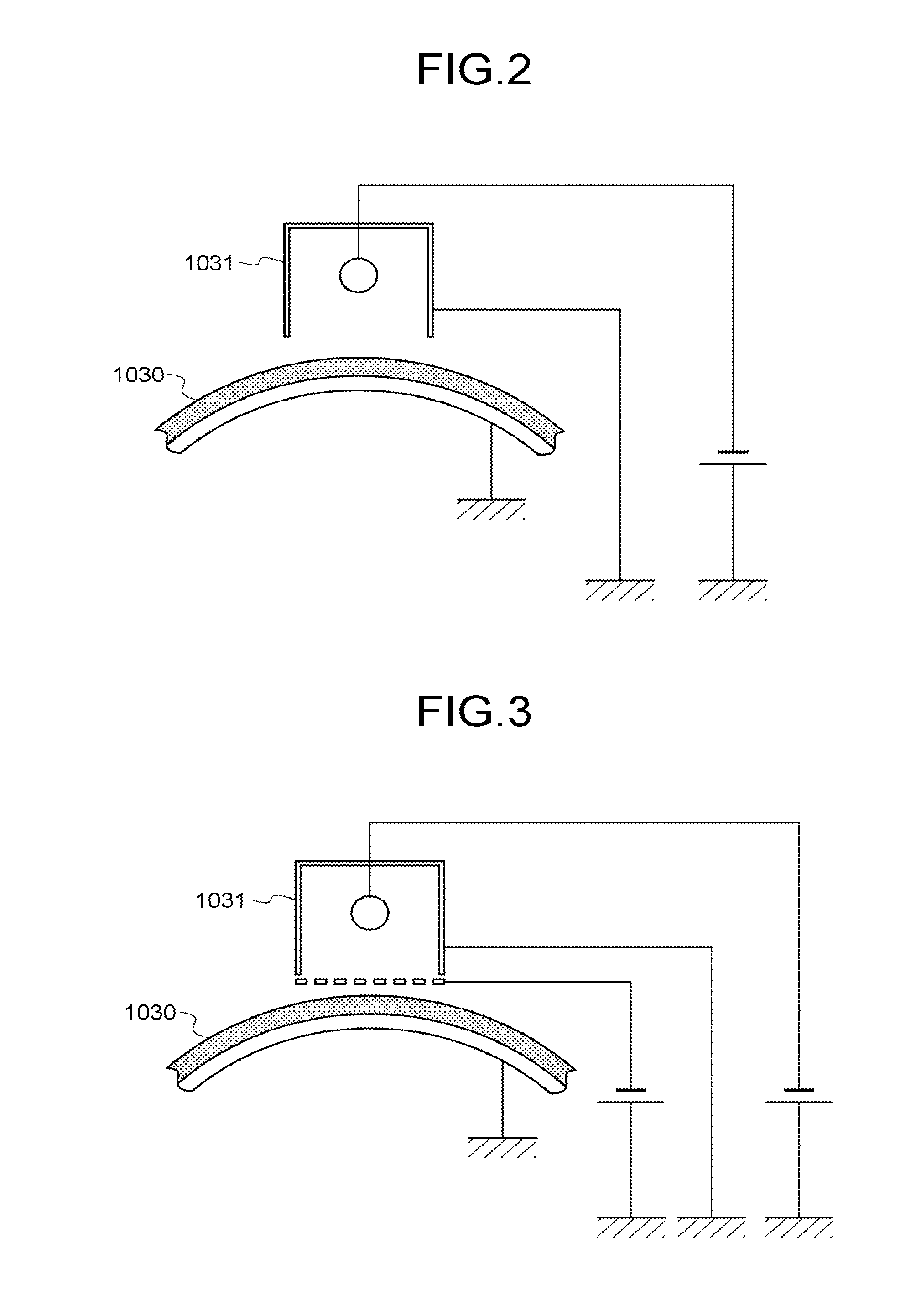Image forming method and image forming apparatus
- Summary
- Abstract
- Description
- Claims
- Application Information
AI Technical Summary
Benefits of technology
Problems solved by technology
Method used
Image
Examples
first example
[0324]An example of the exposing method of the image forming method according to the present invention will be described. In the description hereinafter, for the simplification, image data and an array of pixels constituting the image data are indicated by one-dimensional image data.
[0325]As illustrated in FIG. 34, in image data 50, a numeric value “1” denoted in pixels constituting an image portion 51 indicates that the pixels are exposed with a predetermined light power value. In addition, in the image data 50, a numeric value “0” denoted in pixels constituting a non-image portion 52 indicates that the pixels are not exposed (non-exposure pixel). In the exposing method according to the example, in the image data 50, a predetermined pixel among the pixels constituting the image portion 51 is specified as a target pixel 53.
[0326]After the target pixel 53 is specified, in the exposing method according to the example, a boundary pixel group 54 existing in a boundary (edge) between the...
second example
[0349]Another example of the exposing method of the image forming method according to the present invention will be described.
[0350]In the exposing method according to the example, the acquired image identification information is included in the pixel separated away from the boundary pixel group 54 by at least a sum of the number of consecutive groups each consisting of pixels in one column and included in the non-exposure pixel group 56 and the number of consecutive groups each consisting of pixels in one column and included in the high power exposure pixel group 55. Namely, it is preferable that the image identification information be included in the pixels up to the pixel separated away from the edge of the image portion 51 by two times or more the maximum folding amount of the boundary pixel group 54 (amount of the high power exposure pixel group 55).
[0351]For example, in the case where the number of groups each consisting of pixels in one column in the non-exposure pixel groups...
third example
[0357]Still another example of the exposing method of the image forming method according to the present invention will be described with reference to FIGS. 42A to 42F. In the example, the case where a sum of the number of pixels of the high power exposure pixel group 55 and the number of pixels of the non-exposure pixel group 56 is 6 is exemplified to describe a method of detecting a boundary pixel group of image data in the exposing method of the image forming method according to the present invention.
[0358]In the exposing method according to the example, the target pixel 53 at the center of the image data 50 is set as a reference, and cross-shaped pattern matching illustrated in FIG. 42A to FIG. 42F is sequentially performed.
[0359]In the pattern matching of FIG. 42A, four pixels adjacent to each other in the horizontal and vertical directions from the target pixel 53 are set as reference pixels 57, and it is determined whether or not there is an edge portion. If an edge is detecte...
PUM
 Login to view more
Login to view more Abstract
Description
Claims
Application Information
 Login to view more
Login to view more - R&D Engineer
- R&D Manager
- IP Professional
- Industry Leading Data Capabilities
- Powerful AI technology
- Patent DNA Extraction
Browse by: Latest US Patents, China's latest patents, Technical Efficacy Thesaurus, Application Domain, Technology Topic.
© 2024 PatSnap. All rights reserved.Legal|Privacy policy|Modern Slavery Act Transparency Statement|Sitemap



